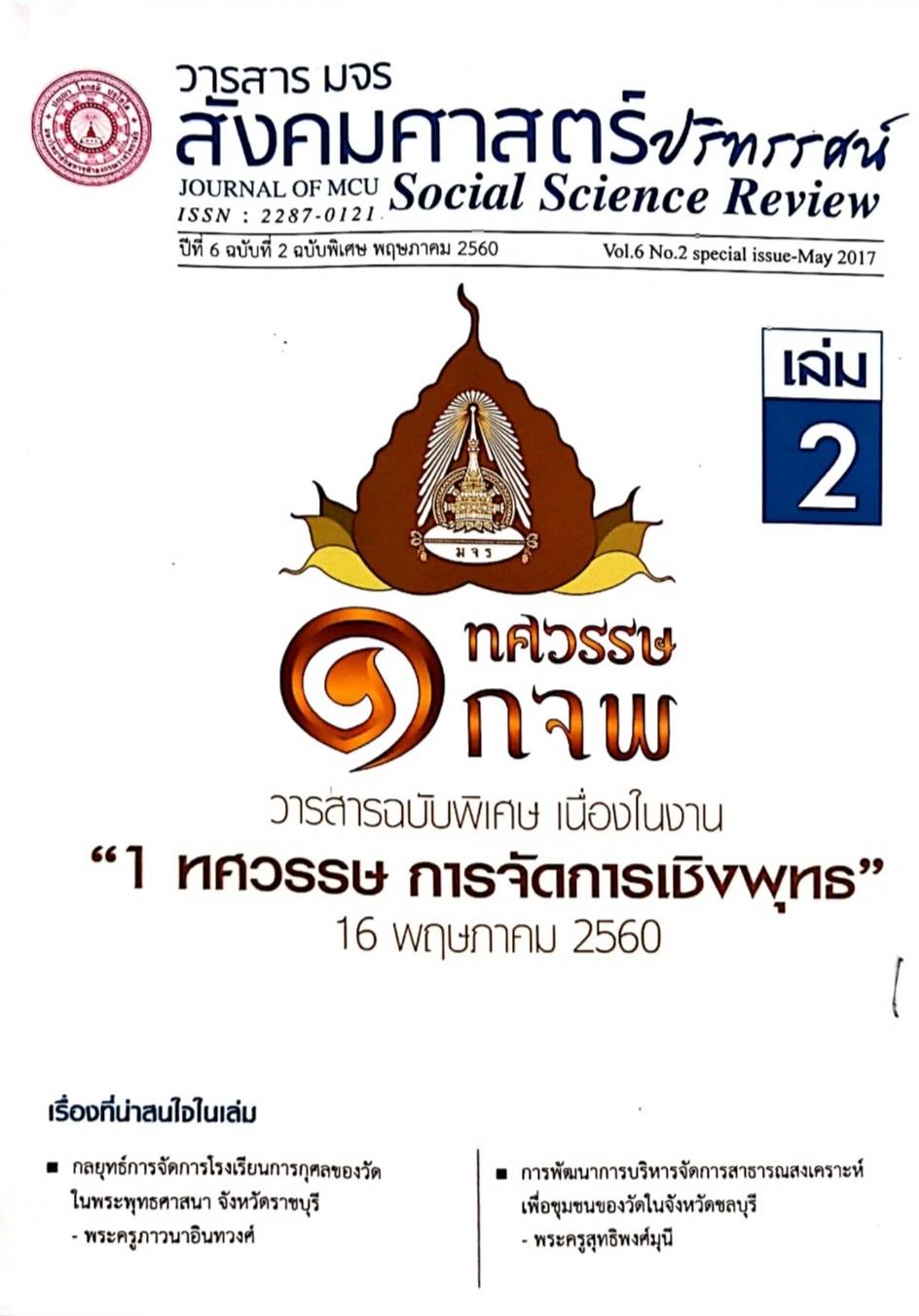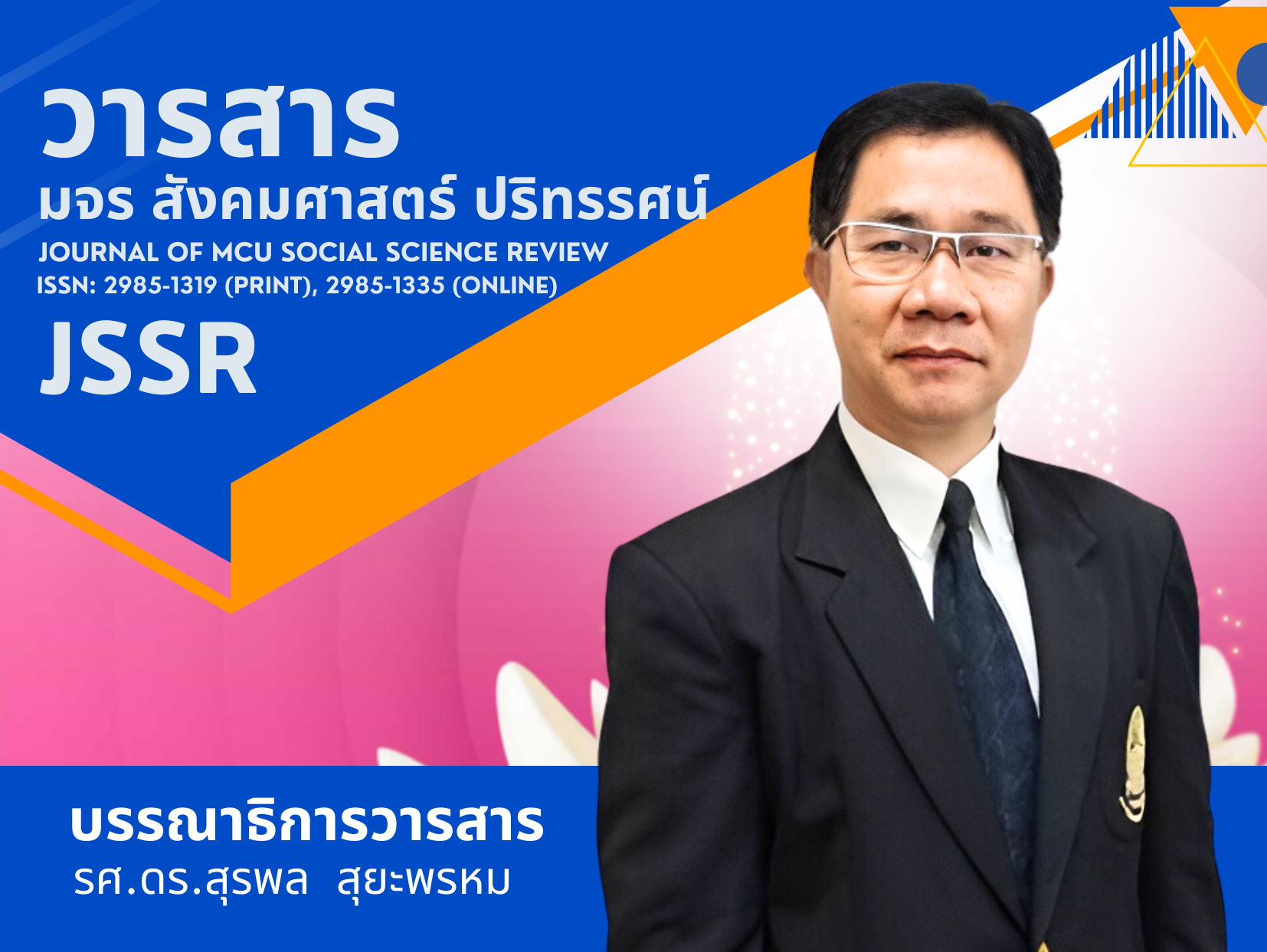INTEGRATIVE PARTICIPATION OF GOVERNMENT AND CIVIL SOCIETY FOR NATURAL RESOURCE MANAGEMENT IN NAN PROVINCE
Keywords:
Integrative, Participation, Civil Society, Natural ResourceAbstract
The Objectives of this Research were: 1. To study the state of participation
in natural resource management ofcivil society in Nan province,2.To study factors
influencing participation in natural resource management of civil society in Nan province.
and 3.To presentanintegrated model of government and civil society participation in
natural resource management in Nan province.
Methodology was the mixed methods; The qualitative research
collected data from 19 key informants, purposefully selected,with the structuredin depth-interview, by face-to-face-interviewing. Data were analyzed by descriptive
interpretation.The quantitative research collected data by questionnaires with
reliability coefficient values at 0.987 from 172 samples who were Government
and civil society personnel in Nan Province by simple random sampling and
analyzed data by frequency, percentile, mean and standard deviation and analyzed
relationship of Variables by Pearson Product Moment Correlation.
Findings were as follows:
1. Generalcondition of involvement in planning for natural resource
(forest) management between the public and civil society in Nan Province, by
all means, all agencies in Nan Province were aware of and focused on forest
management. Currently, there is a common decision making between the
governmental agencies and civil society, for example, the provincial
administration gives civil society the opportunity to participate in decision -
making. Benefits gained indirectly such as the community had good, clean air,
better life, seasonal rain, no floods and no forest was destroyed and forest
was expanded. The operational assessment was carried out legitimately with
outsiders participating in the process. The joint assessment of projects
between the state and civil society was conducted for the verification purpose.
2. Factors affecting participation in natural resource management of civil society
in Nan Province were that state and civil society in Nan Province were involved in the
natural resource management at the moderate level. Considering the mean values from
high to low were that the highest level was the benefit sharing, secondly the participatory
operation, participatory decision-making, participatory planning, were at the high to low
level respectively and the lowest level of participation was the participatory evaluation.
The correlations were thatSaraniyadhamma, virtue for fraternal living, had correlations with
the interactively participatory natural resource management of state and civil society in
Nan Province at the statistical significant level at 0.01. The high level of correlations were
benefit sharing (Y4) was at 0.749, participatory decision-making (Y2) was at 0.711,
participatory planning (Y1) was at 0.688, participatory evaluation (Y5) was at 0.681 and
participatory operation (Y3) was at 0.658
3. Forms of participation in planning, decision-making, operation, benefits
sharing and evaluation were to apply Saraniyadhamma 6, virtues for fraternal living, to
enhance the effective and efficient participations in various activities between state and
civil society. State and civil society should be humble and polite, respectful to each other, well behave to each other with good ethical morality, both in front and behind,
by telling and informing good things with good wishes, by thinking of doing good things to
society, sharing benefits gained lawfully directly and indirectly, obeying and keeping the
laws, rules and regulations of society, respecting and listening to one another’s opinions.
These forms of participations would make the integrated participation of natural
resource(forest) management between the state and civil society in Nan Province the
sustainable management.
References
Cohen. J.M. and Uphoff. (1984). The Cornell Rural Development Participation Project. Rural Development Review. KanjanaDamjutti. (2557). The Buddhist Promoting Method Community Leader’s Participation in The Local Administration of Bangkok Metropolitan. (DoctoralDissertation).Bangkok:Mahachulalongkorn tajavidyalaya University.
Office of Nan province. (2558). Nan Provincial Development PlanB.C. 2558 – 2561. Nan :Office of Nan province.
PhaBrahmagunabhorn (P.A. Payutto).(2553). A Constitution for Living. Bangkok: Printed at Sahadhammika.
PrawitTantalanukul. (2555). Nan Chronicles : Issue Watphrathatchaehaeng. Chiangmai :ChiangmaisangsilPrinting
SukhumanPrasomsak. (2557). The Participation Strategy of People Regarding The Buddhism Moral Code in Environmental Management of Provincial Administration Organization in The Upper Central Provinces (Doctoral
Dissertation).Bangkok : Mahachulalongkorntajavidyalaya University.
WichainRujidhamrongkul.(2557).The Roles and Mechanisms of Government, Private sectorand Civil society in Solve environmental problems of Thailand. (Doctoral Dissertation).Bangkok:Ramkhamhaeng University.
Downloads
Published
How to Cite
Issue
Section
License
Copyright (c) 2020 Journal of MCU Social Science Review

This work is licensed under a Creative Commons Attribution-NonCommercial-NoDerivatives 4.0 International License.
In order to conform the copyright law, all article authors must sign the consignment agreement to transfer the copyright to the Journal including the finally revised original articles. Besides, the article authors must declare that the articles will be printed in only the Journal of MCU Journal of Social Sciences. If there are pictures, tables or contents that were printed before, the article authors must receive permission from the authors in writing and show the evidence to the editor before the article is printed. If it does not conform to the set criteria, the editor will remove the article from the Journal without any exceptions.




